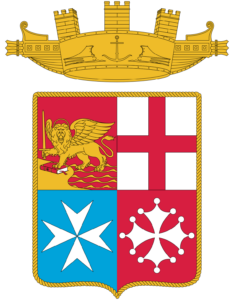The Maritime Republics of Italy hold a fascinating place in history, representing a period when Italian city-states became powerful centers of commerce, innovation, and culture during the Middle Ages and Renaissance. This article delves into their rise, characteristics, achievements, and enduring impact.
Introduction: The Emergence of the Maritime Republics
 The Maritime Republics of Italy—Venice, Genoa, Pisa, and Amalfi—were dynamic city-states that flourished during the Middle Ages. They established themselves as hubs of commerce, innovation, and cultural exchange in a time when much of Europe remained fragmented and feudal.
The Maritime Republics of Italy—Venice, Genoa, Pisa, and Amalfi—were dynamic city-states that flourished during the Middle Ages. They established themselves as hubs of commerce, innovation, and cultural exchange in a time when much of Europe remained fragmented and feudal.
These republics harnessed their strategic coastal locations to dominate Mediterranean trade, expand maritime technology, and influence global politics. Their legacy is a testament to human ingenuity and ambition, with impacts that continue to be felt in modern Italy and beyond.
Historical Context: Italy in the Middle Ages
Geopolitical Landscape of Medieval Italy
Following the collapse of the Western Roman Empire in the 5th century, Italy became a patchwork of small territories controlled by foreign powers, the Papacy, and local rulers. Amid this fragmentation, coastal cities found opportunities to thrive by leveraging their access to the sea.
Decline of the Roman Empire and the Birth of City-States
As the Roman infrastructure crumbled, Italian cities began to assert independence. By the 10th century, some coastal cities developed robust economies based on maritime trade, setting the stage for their evolution into powerful republics.
Defining the Maritime Republics
The Four Great Republics
- Venice: Known as the “Queen of the Adriatic,” Venice wielded immense influence through trade and naval dominance.
- Genoa: A formidable western Mediterranean power, Genoa excelled in banking and commerce.
- Pisa: An early leader in Mediterranean trade and naval warfare, Pisa played a critical role in the Crusades.
- Amalfi: A pioneering republic whose influence faded earlier than the others, but whose contributions to navigation were significant.
Their Shared Characteristics
These republics shared common features, including:
- Maritime-oriented economies.
- Autonomous governance rooted in trade-driven aristocracies.
- Innovation in naval architecture and navigation.
Genoa: The Superpower of the West
Rise to Prominence
Genoa emerged as a dominant force by controlling trade routes in the western Mediterranean. It developed lucrative connections with North Africa, the Byzantine Empire, and northern Europe.
Economic Influence: Trade and Finance
The city established banking systems that influenced modern financial practices. Genoese merchants played a significant role in financing expeditions and trade networks.
Major Conflicts: Rivalry with Venice
Genoa and Venice engaged in several conflicts, culminating in wars like the War of Chioggia. These battles highlighted the fierce competition between the republics for control of Mediterranean trade.
Cultural Contributions
Genoa’s artistic and architectural achievements include magnificent palaces and contributions to the Renaissance.
Venice: The Queen of the Adriatic
The Founding of Venice
Venice was founded on the islands of the Venetian Lagoon by refugees fleeing barbarian invasions. Its unique geography provided natural defenses and facilitated maritime activities.
Role in the Crusades
Venice played a pivotal role in transporting Crusaders and securing trade monopolies in the Levant.
Dominance in Mediterranean Trade
Venice became the primary link between Europe and the Eastern world, importing spices, silk, and other luxury goods.
Innovations in Art and Architecture
Venice’s contributions to art, particularly during the Renaissance, include works by Titian and Palladio.
Pisa: The Maritime Pioneer
Early Successes in Trade
Pisa excelled in Mediterranean trade during the 11th and 12th centuries, establishing colonies in the Levant.
Pisa’s Military Campaigns and Crusades
The republic was instrumental in several Crusades, offering naval and military support.
Decline After the Battle of Meloria
Pisa’s decline began after a devastating defeat by Genoa in 1284, which ended its dominance.
Amalfi: The Forgotten Gem
Amalfi’s Role in Early Mediterranean Trade
Amalfi was an early maritime republic, pioneering trade routes to the Arab world and Byzantium.
Innovations Like the Amalfi Tables
The “Tabula Amalphitana,” a maritime code, influenced legal systems across Europe.
Decline and Legacy
Amalfi’s decline was due to conquests and natural disasters, but its legacy persists in legal and cultural history.
Economic Achievements of the Maritime Republics
Trade Routes and Commodities
The republics dominated trade routes connecting Europe, Asia, and Africa, dealing in spices, textiles, and precious metals.
Banking and Early Capitalism
These cities pioneered banking systems, enabling large-scale trade and early forms of capitalism.
Legacy of the Maritime Republics
The Maritime Republics left an indelible mark on history, from advancing navigation to fostering cultural exchange. Their spirit of innovation and resilience continues to inspire modern Italy.
FAQs About the Maritime Republics
- What were the Maritime Republics?
The Maritime Republics were powerful Italian city-states that dominated Mediterranean trade during the Middle Ages. - Why were they called ‘Maritime Republics’?
They were called “maritime” because of their reliance on naval power and seaborne trade. - Which republic was the most powerful?
Venice and Genoa were the most influential, with Venice excelling in the eastern Mediterranean and Genoa in the west. - What caused their decline?
Shifts in trade routes and the rise of centralized states contributed to their decline. - What is the legacy of the Maritime Republics?
They influenced global trade, finance, and navigation, and their cultural contributions shaped the Renaissance. - Are there modern remnants of the Maritime Republics?
Cities like Venice and Genoa remain culturally and historically significant, attracting millions of visitors annually.
Conclusion: Why the Maritime Republics Still Matter
The Maritime Republics exemplify human adaptability, ambition, and the transformative power of trade. Their achievements in commerce, governance, and culture continue to resonate, offering lessons on innovation and resilience.
Italian Dating & Chat for Italian Singles

Virtually meet thousands of like-minded Italian singles and connect at lightning speed; on desktop, tablet, and your beloved phone. Chat into the wee hours of the night if you’d like. Post photos, share your interests and dreams-we’ll help you look your best while you do it.Here we make it easy to meet Italian singles and feel things out first so when you do go on that first date, or meet for espresso, you can relax and be yourself. Try it now!





